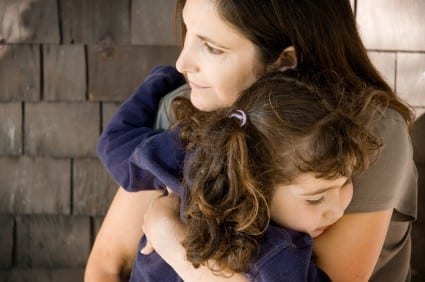By attuning your ears to your child’s social environment, parents can learn to listen to what a child is not saying as well as what he is saying. Keep in mind that the top three influences on your child’s behavior and feelings are family, school, and friends. If something is amiss with your child – if he acts out, becomes moody and sad, or has trouble finishing his schoolwork – learn to discover the source of the problem in your child’s social context.
1) Hear What They Are Afraid To Tell You
If a parent wants to get to the root of what is troubling her child, the first thing I would suggest is for her to widen her lens and think outside the box. Instead of listening to a child’s problem as a sign or symptom of a “mental disorder” or as a “chemical imbalance” in the child’s brain, think about the bigger picture. Ask yourself what could be amiss in the child’s social context. Is something troubling the child at school? Is the child responding to a situation in the family? Thinking outside the box about how something in a child’s social environment (including family, friends and school) may be troubling him takes a little practice on the part of parents. It is a little like the art of being a detective. But once you start to think of your child as responding to his social environment, listening for clues will become easier.
2) Don’t Judge What They Tell You If You Want Them To Keep Talking To You
A parent can understandably feel guilty and defensive if her child tells her something like: “I feel scared when you yell at me” or “I wish you would play a game with me sometimes” or “you play with my sister more than me.” Remember: when a parent becomes defensive and stops listening, her child will stop talking. Keep in mind that every parent “loses it” once in awhile and yells at her child. No parent is perfect. Hear what your child has to say, even if it makes you feel uncomfortable. You can’t go backward, you can only go forward. Apologize to your child if that is appropriate, and move on. Reflect your child’s feeling by saying “I hear what you’re saying. I didn’t realize that I haven’t played a game with you for a long time. I’m sorry. Let’s play a game after dinner.” Children have a different “conversational style" than adults. They like to play a game while talking. The more parents tune into their child’s conversational style, the more the child will open up
3) Get an Objective "Strategic Child-Focused Family Therapist" To Evaluate/Hear Your Child Before Prescribing Unnecessary Meds
A strategic child-focused family therapist will help you find common sense solutions to your child’s problem without judging or blaming parents or tagging your child with a disrespectful psychiatric label. Family therapy is a “team effort,” in which the therapist collaborates with parents. She may see parents together with their child and then spend a little time with the child alone. She knows what questions to ask children and what to listen for. She also knows how to make your child feel comfortable by suggesting that she and the child play a board game while talking. Creating a “play space” where conversation can take place makes a child feel at ease..
4) After Listening to the Child’s Issue, Reframe the Difficulty Without Negative Labels Toward the Child
To see how useful a small strategic intervention can be, consider the charming case of reframing with which many readers are familiar. When rascally Tom Sawyer wanted to get his friend Ben to take over the chore of whitewashing his Aunt Polly’s fence, Tom simply reframed the task as a coveted privilege rather than work. Nothing changed about the act of whitewashing. What changed was Ben’s way of thinking about it. Tom Sawyer was thinking like a strategic family therapist. Family therapists frame children’s problems as responses to family situations and life transitions, such as illness, job problems, or marital difficulties. Sometimes a child may also struggle with a developmental hurdle such as learning to talk or mastering reading. In this situation, the therapist focuses on the specific hurdle rather than diagnosing the child’s problem as one symptom in a cluster that together constitute a psychiatric disorder.
—
Marilyn Wedge’s SUFFER THE CHILDREN: The Case against Labeling and Medicating and an Effective Alternative [W. W. Norton & Company; March 28, 2011] presents parents of troubled children with a much-needed alternative: child-focused family therapy. Wedge, who has practiced family therapy for more than twenty years, explains that instead of immediately viewing children’s symptoms as biologically determined “disorders,” psychiatrists and counselors should first consider the child’s environment. A child’s stress or sadness, school problems or aggressiveness, anxiety or compulsive behaviors should be considered by looking at the child’s social context. Unlike many other forms of therapy, family therapy includes meeting not only with the child’s parents, siblings, and at times extended family, but also with teachers, school psychologists, and counselors. Wedge presents creative strategies that encourage parents and other therapists to treat children’s problems not as biologically encoded limitations, but as responses to relationships in their lives that can be altered with the help of a therapist. Visit Marilyn at sufferthechildren.net





